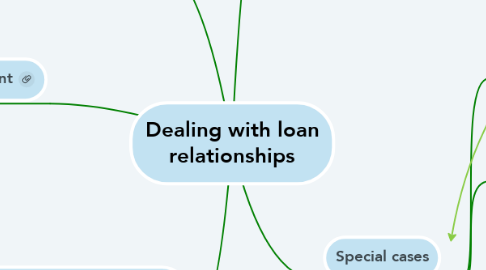
1. Advising the client
2. Do the rules apply?
2.1. Loan relationship
2.1.1. Money debt
2.1.2. Debtor or creditor
2.1.3. Transaction for lending of money
2.2. Relevant non-lending relationship
2.2.1. Money debt
2.2.2. Debtor or creditor
2.2.3. Not transaction for lending of money
3. How are debits and credits taxed?
3.1. Purpose of loan
3.1.1. Trade
3.1.1.1. Part of trade income
3.1.2. Non-trade
3.1.2.1. Pooled to give non-trade profit/deficit
3.1.3. Unallowable purpose
3.1.3.1. No releif for debits
4. What are debits and credits?
4.1. Amounts
4.1.1. Interest paid and received
4.1.2. Expenses
4.1.3. Profits
4.1.4. Losses
4.2. Debit = expense/loss
4.3. Credit = income/profit
4.4. Tax follows accounts
4.4.1. Exceptions in special cases
5. Special cases
5.1. Connected & interest paid late
5.1.1. Test
5.1.1.1. Close company & participator
5.1.1.2. Interest paid >12m from YE
5.1.2. Relief on paid basis
5.2. Connected company
5.2.1. Test
5.2.1.1. Control
5.2.2. Use amortised cost
5.2.3. Impairments not taxed/relieved
5.3. Groups
5.3.1. Test
5.3.1.1. 75% direct
5.3.1.2. 51% indirect
5.3.2. Transfers at NGNL
5.3.3. Degrouping charge
5.4. Loan to participator
5.4.1. No relief for write off
5.5. Interest-free & low interest loans
5.5.1. PV and amortised cost
5.5.1.1. Not if repayable on demand
5.5.1.2. Not if small and loan from director shareholder
5.5.1.3. Tax rules to prevent asymmetry
